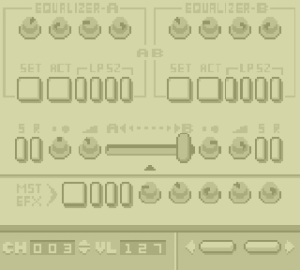More actions
Basic information
| Display title | Faderfox Jr GB |
| Default sort key | Faderfox Jr GB |
| Page length (in bytes) | 3,856 |
| Page ID | 35514 |
| Page content language | en-gb - British English |
| Page content model | wikitext |
| Indexing by robots | Allowed |
| Number of redirects to this page | 0 |
| Counted as a content page | Yes |
| Page image |  |
Page protection
| Edit | Allow all users (infinite) |
| Move | Allow all users (infinite) |
Edit history
| Page creator | HydeWing (talk | contribs) |
| Date of page creation | 10:52, 12 September 2023 |
| Latest editor | HydeWing (talk | contribs) |
| Date of latest edit | 10:52, 12 September 2023 |
| Total number of edits | 1 |
| Total number of distinct authors | 1 |
| Recent number of edits (within past 90 days) | 0 |
| Recent number of distinct authors | 0 |
Page properties
| Transcluded templates (3) | Templates used on this page: |
SEO properties
Description | Content |
Page title: (title)This attribute controls the content of the <title> element. | GameBrew |
Title mode (title_mode)More_information | append |
Article description: (description)This attribute controls the content of the description and og:description elements. | Faderfox Jr. is a Game Boy program and Windows application created, programmed, and maintained by 8cylinder. Faderfox Jr. attempts to emulate the functionality of the Micromodul LX1. The Game Boy program is comprised of a screen with a matrix of virtual "buttons". It can be run on any real Game Boy and/or Game Boy emulator. A Microsoft Windows application converts the data generated by the Game Boy into MIDI data usable by PC applications. The PC Linker Game Boy port-to-parallel port cable transfers data from the Game Boy to a PC, where the Microsoft Windows application performs the necessary transformations. |
Article image: (image)This attribute controls the content of the og:image element. This image is mostly displayed as a thumbnail on social media. |  |
Image alternative text: (image_alt) | Faderfox Jr. |
